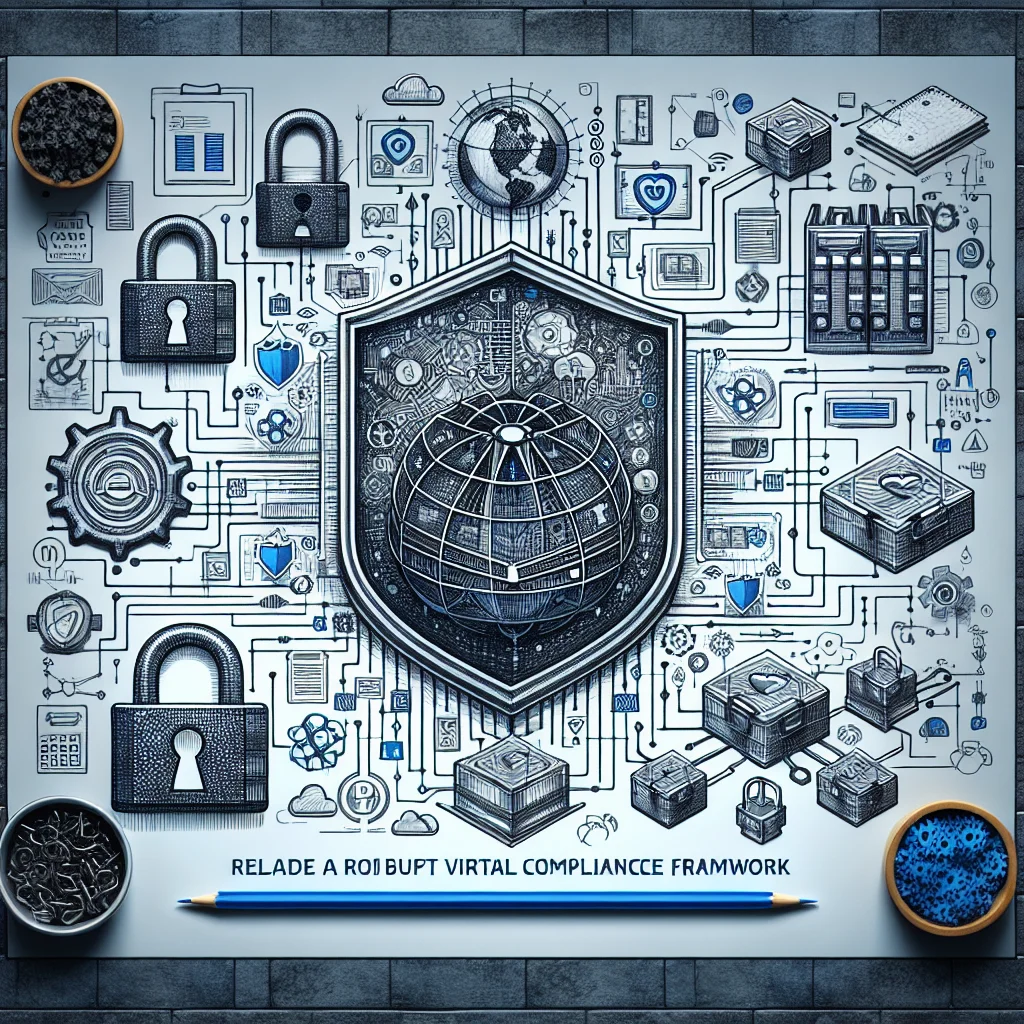In the rapidly evolving world of financial technology, compliance with security standards is more critical than ever. Among these, the PCI-PIN (Payment Card Industry – PIN Transaction Security) standard stands out for its rigorous requirements and crucial role in safeguarding PIN-based transactions. This article aims to demystify the PCI-PIN standard, provide actionable insights for Fintechs and banks.
What is the PCI-PIN Standard?
The PCI-PIN standard sets the technical and operational requirements for securing Personal Identification Number (PIN) data during online and offline transactions. Its goal is to protect cardholder data during a transaction, preventing unauthorized access and ensuring that financial transactions are both secure and trustworthy.
Why is PCI-PIN Important?
The importance of the PCI-PIN standard cannot be overstated. Non-compliance exposes organizations to severe penalties, reputational damage, and significant financial losses. For CISOs in the Middle East, where digital payment adoption is accelerating, adhering to this standard is vital for maintaining customer trust and regulatory compliance.
Frequently Asked Questions (FAQs) About the PCI-PIN Standard
- What is the main objective of the PCI-PIN standard?
- To secure PIN data during transactions and prevent unauthorized access.
- Who needs to comply with PCI-PIN?
- Any organization that handles PIN-based transactions, including banks, payment processors, and Fintech companies.
- What are the key components of PCI-PIN compliance?
- Secure PIN processing, key management, and physical security controls.
- How often is the PCI-PIN standard updated?
- The standard is reviewed and updated every three years by the PCI Security Standards Council.
- What penalties exist for non-compliance?
- Penalties can include fines, increased transaction fees, and loss of the ability to process card payments.
- How does PCI-PIN differ from PCI-DSS?
- PCI-DSS covers broader payment card security, while PCI-PIN focuses specifically on the security of PIN data during transactions.
- Can PIN data be encrypted?
- Yes, PIN data must be encrypted during transmission and storage to prevent unauthorized access.
- What are the physical security requirements for PCI-PIN?
- Secure facilities, restricted access to PIN entry devices, and regular inspections.
- How does PCI-PIN address key management?
- It mandates robust key management practices, including key generation, distribution, storage, and destruction.
- What is a TRSM (Tamper-Resistant Security Module)?
- A TRSM is a device that provides secure storage and processing of cryptographic keys and PINs.
- Are there specific testing requirements for PCI-PIN compliance?
- Yes, regular security assessments and penetration testing are required to ensure ongoing compliance.
- How should PIN entry devices be managed?
- Devices must be securely deployed, monitored, and audited regularly.
- What are the reporting requirements for PCI-PIN compliance?
- Organizations must submit regular compliance reports and undergo audits.
- How does PCI-PIN relate to other security standards?
- PCI-PIN shares common controls with standards like ISO27001 and PCI-DSS, focusing on data protection and secure transactions.
- What is the role of encryption in PCI-PIN compliance?
- Encryption is critical for protecting PIN data during transmission and storage.
- What are the network security requirements for PCI-PIN?
- Secure network configurations, firewalls, and intrusion detection systems.
- How can organizations prepare for a PCI-PIN audit?
- Regular internal assessments, documentation reviews, and staff training.
- What is the importance of employee training in PCI-PIN compliance?
- Well-trained staff are essential for maintaining security protocols and preventing breaches.
- Can third-party service providers help with PCI-PIN compliance?
- Yes, working with experienced compliance partners can simplify the process and ensure adherence to standards.
- What tools are available for automating PCI-PIN compliance?
- Compliance automation platforms like ComplyHawk can streamline documentation, testing, and reporting processes.
- Where to Start with PCI-PIN Compliance?
For Fintechs- Conduct a Gap Analysis: Assess your current security posture against PCI-PIN requirements to identify areas of improvement.
- Invest in Secure Infrastructure: Ensure that your hardware and software meet the necessary security standards.
- Implement Strong Key Management Practices: Use robust cryptographic methods and secure key storage solutions.
- Employee Training: Regularly train staff on security best practices and compliance requirements.
- Continuous Monitoring: Implement tools and processes for real-time monitoring and alerting of security incidents.
- For Banks
- Establish a Compliance Team: Designate a team responsible for overseeing PCI-PIN compliance efforts.
- Secure PIN Entry Devices: Ensure that all devices handling PIN data are secure and regularly inspected.
- Conduct Regular Audits: Schedule periodic audits to identify and address any compliance gaps.
- Collaboration with Third Parties: Work with trusted service providers to enhance your security posture.
- Leverage Technology: Utilize advanced security solutions and automation tools to streamline compliance processes.
- How to Implement PCI-PIN Compliance?
- Develop a Compliance Roadmap: Outline the steps needed to achieve and maintain compliance, including timelines and responsible parties.
- Perform a Risk Assessment: Identify potential threats and vulnerabilities related to PIN data processing.
- Implement Security Controls: Deploy the necessary technical and operational controls to protect PIN data.
- Document Policies and Procedures: Maintain comprehensive documentation of your compliance efforts, including policies, procedures, and audit logs.
- Engage with Auditors: Work closely with auditors to ensure that your compliance measures meet the required standards.
- PCI PIN vs VISA PIN standard?
- The VISA PIN standard was a security standard developed by VISA for its own card processing systems. It was sunsetted on October 1st, 2023. But the PCI-PIN standard, still applies to all payment processors and Fintech companies.
- While both standards focus on the security of PIN data during transactions, PCI-PIN is a more comprehensive and widely recognized standard that covers broader payment card security measures.
- As such, organizations should ensure compliance with PCI-PIN.
- It is important for organizations to stay up-to-date with changes in industry standards and maintain ongoing compliance efforts to protect sensitive customer data
- Common Controls Between PCI-PIN, ISO27001, and PCI-DSS
Data Protection- Encryption: Required across all standards to protect sensitive data, but PCI-DSS specifies encryption at rest and in transit, while ISO27001 emphasizes encryption based on risk assessment outcomes.
- Access Control: Stringent access control measures ensure that only authorized personnel can access sensitive information. PCI-DSS mandates role-based access controls, while ISO27001 focuses on a broader information security management approach.
- Security Management
- Risk Assessments: Regular risk assessments to identify and mitigate potential threats. ISO27001 requires ongoing risk management, while PCI-DSS emphasizes risk assessments as part of the compliance process.
- Incident Response: Comprehensive incident response plans to address security breaches promptly. PCI-DSS has specific incident response requirements, whereas ISO27001 allows for a more flexible approach based on the organization’s context.
- Physical Security
- Secure Facilities: Restricted access to sensitive areas and regular security inspections are common. PCI-DSS requires physical security measures for cardholder data environments, while ISO27001 entails a more comprehensive approach to physical security in alignment with overall risk.
- Device Management: Secure deployment and monitoring of hardware devices handling sensitive data. PCI-DSS specifies requirements for POS and payment devices, while ISO27001 focuses on the lifecycle management of all assets.
- Differences
- Scope: PCI-PIN and PCI-DSS primarily focus on payment card data security, while ISO27001 encompasses a wider range of information security management practices.
- Compliance Approach: PCI-DSS has prescriptive compliance requirements, whereas ISO27001 is based on a risk management framework that provides more flexibility in implementation.
- Control Framework: PCI-DSS controls are specific to payment environments, whereas ISO27001’s controls are applicable across various sectors and are based on best practices in information security management.
- The Implications for CISOs in the Middle East
For CISOs in the Middle East, PCI-PIN compliance presents unique challenges and opportunities. The region’s rapid digital transformation and increasing adoption of electronic payment systems mean that robust security measures are essential. CISOs must:- Stay Informed: Keep up-to-date with the latest security threats and compliance requirements.
- Collaborate with Stakeholders: Engage with internal and external stakeholders to ensure a unified approach to compliance.
- Leverage Technology: Utilize advanced security solutions and compliance automation tools to streamline efforts.
- Focus on Customer Trust: Maintaining customer trust through robust security practices is critical for business success.
- How ComplyHawk Can Automate PCI-PIN Compliance
Document Requests- Automated Documentation: Generate and manage compliance documentation effortlessly.
- Centralized Repository: Store all compliance-related documents in one secure location.
- Tests
- Regular Assessments: Schedule and perform automated security assessments to identify and address vulnerabilities.
- Comprehensive Reporting: Generate detailed compliance reports for internal review and external audits.
- Alerts
- Real-time Monitoring: Receive automatic alerts for any potential compliance issues.
- Remediation Guidance: Get guidance on addressing identified vulnerabilities and achieving ongoing compliance.
- Final Thoughts
Achieving and maintaining PCI-PIN compliance can be complex and time-consuming. However, with the right approach and tools, you can streamline the process and ensure robust security for your organization.
Want help on your compliance journey? Contact us at ComplyHawk to find out how us and our platform can help.



